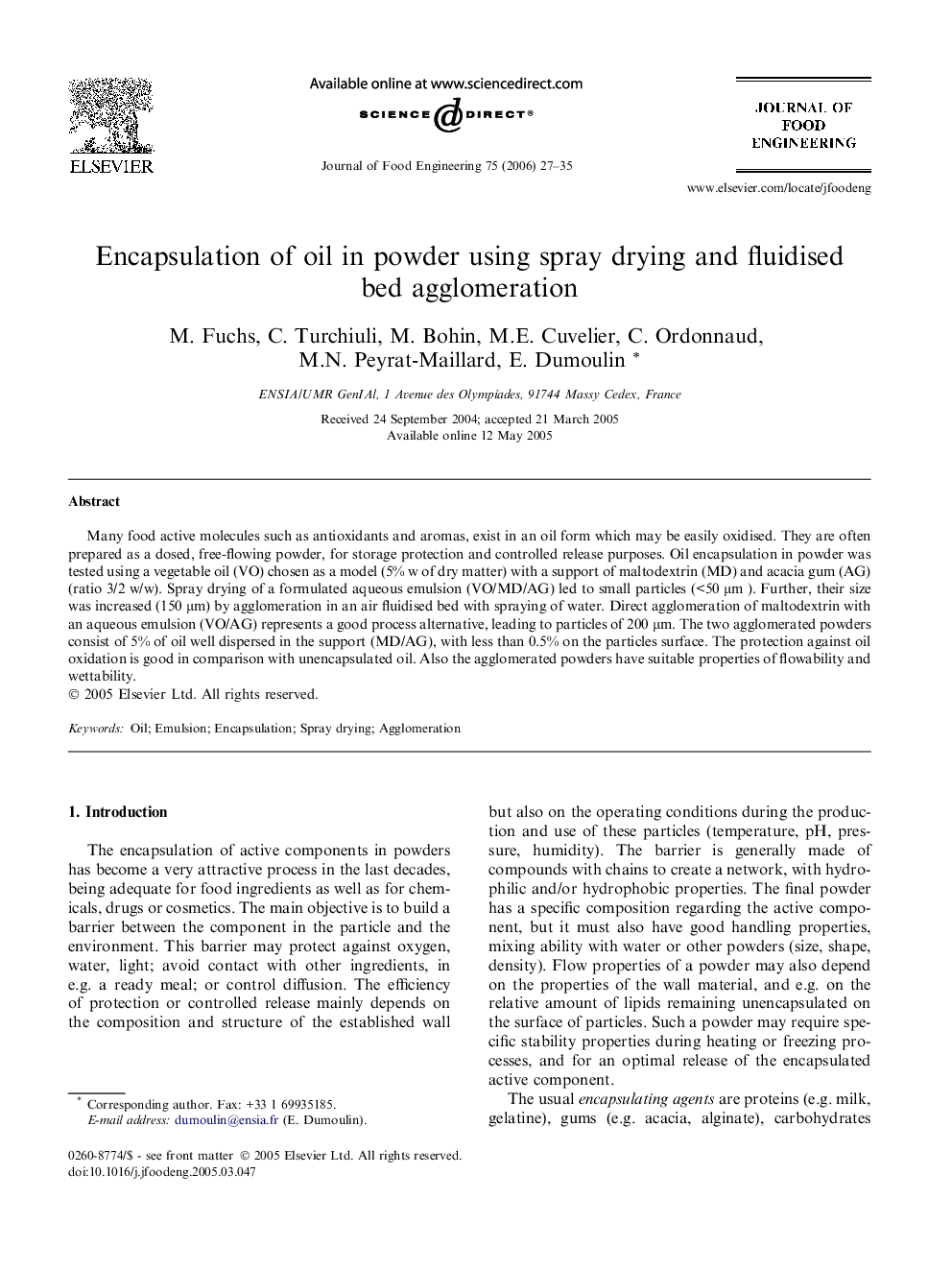| Article ID | Journal | Published Year | Pages | File Type |
|---|---|---|---|---|
| 226513 | Journal of Food Engineering | 2006 | 9 Pages |
Many food active molecules such as antioxidants and aromas, exist in an oil form which may be easily oxidised. They are often prepared as a dosed, free-flowing powder, for storage protection and controlled release purposes. Oil encapsulation in powder was tested using a vegetable oil (VO) chosen as a model (5% w of dry matter) with a support of maltodextrin (MD) and acacia gum (AG) (ratio 3/2 w/w). Spray drying of a formulated aqueous emulsion (VO/MD/AG) led to small particles (<50 μm ). Further, their size was increased (150 μm) by agglomeration in an air fluidised bed with spraying of water. Direct agglomeration of maltodextrin with an aqueous emulsion (VO/AG) represents a good process alternative, leading to particles of 200 μm. The two agglomerated powders consist of 5% of oil well dispersed in the support (MD/AG), with less than 0.5% on the particles surface. The protection against oil oxidation is good in comparison with unencapsulated oil. Also the agglomerated powders have suitable properties of flowability and wettability.
